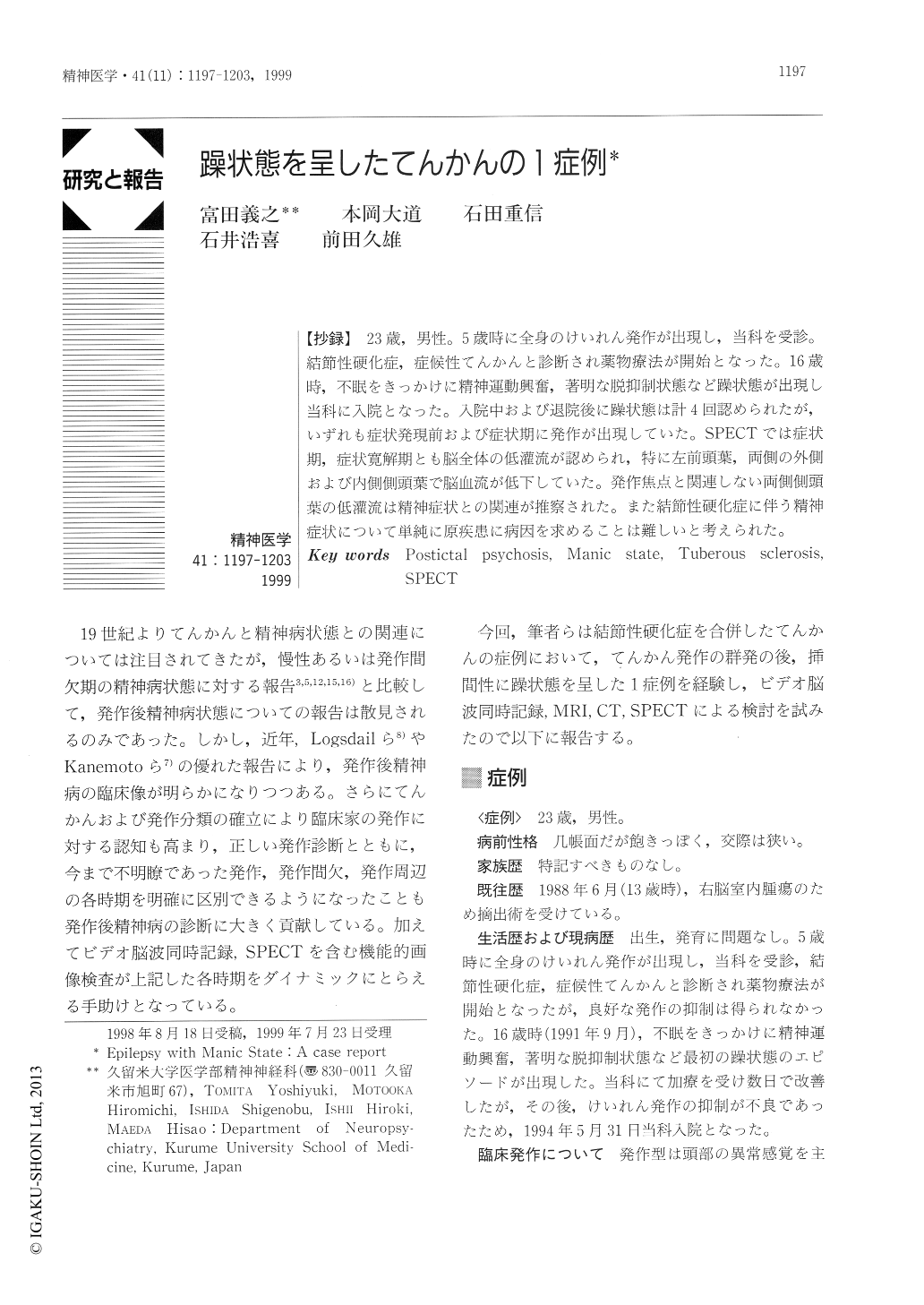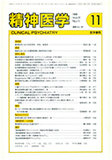Japanese
English
- 有料閲覧
- Abstract 文献概要
- 1ページ目 Look Inside
【抄録】 23歳,男性。5歳時に全身のけいれん発作が出現し,当科を受診。結節性硬化症,症候性てんかんと診断され薬物療法が開始となった。16歳時,不眠をきっかけに精神運動興奮,著明な脱抑制状態など躁状態が出現し当科に入院となった。入院中および退院後に躁状態は計4回認められたが,いずれも症状発現前および症状期に発作が出現していた。SPECTでは症状期,症状寛解期とも脳全体の低灌流が認められ,特に左前頭葉,両側の外側および内側側頭葉で脳血流が低下していた。発作焦点と関連しない両側側頭葉の低灌流は精神症状との関連が推察された。また結節性硬化症に伴う精神症状について単純に原疾患に病因を求めることは難しいと考えられた。
The patient was a 19-year-old right-handed man who had onset of seizures at the age of 5 years. When he was referred to our hospital, he was found to have tuberous sclerosis. At the age of 16 years, he developed a psychotic state, with-out psychological factors, that consisted of psychomotor excitement, dysinhibition, and irritability. Because of his psychotic state, he was admitted to our hospital in May 1995. We observed two postictal psychotic episodes during this admission. 123I-IMP SPECT images during the remissional state showed diffuse cerebral hypoperfusion, particulary left frontal, bilateral and mesial temporal hypoperfusion.99mTc-HMPAO SPECT images during the psychotic state showed almost the same findings as those in the remissional state, in addition to right frontal and left cerebellar hypoperfusion. Ictal scalp EEG and ictal clinical symptoms suggested that his seizures originated from his left frontal lobe. Therefore, our present study suggests that the hypoperfusion in the bilateral temporal regions correlated with psychotic symptoms. We think that psychotic states in some patients with tuberous sclerosis can be recognized postictal psychosis

Copyright © 1999, Igaku-Shoin Ltd. All rights reserved.


